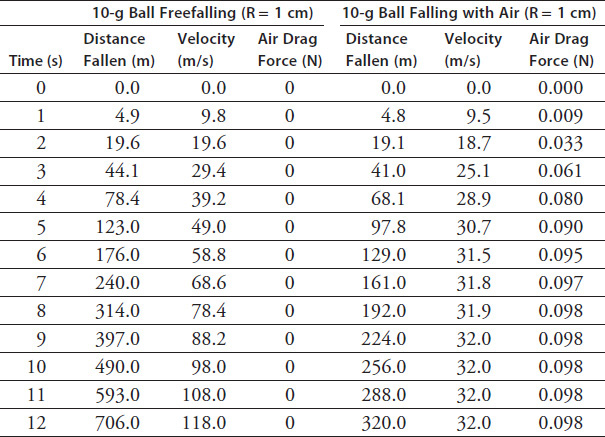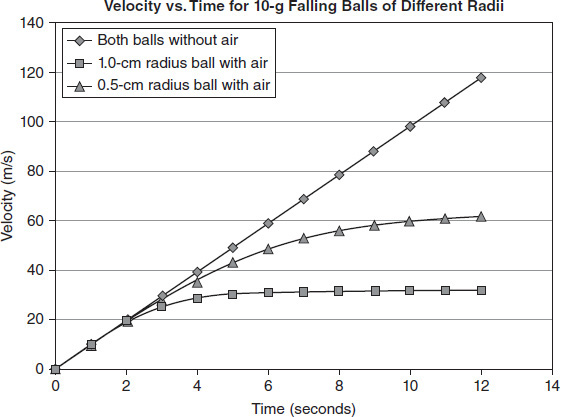ACT Science Practice Test 27
Bộ sưu tập: Tuyển Tập Bộ Đề Thi Đại Học Hoa Kỳ (ACT) - Có Đáp Án Chi Tiết
Số câu hỏi: 27 câuSố mã đề: 1 đềThời gian: 1 giờ
192,997 lượt xem 14,843 lượt làm bài
Bạn chưa làm đề thi này!
The moon is the earth's only natural satellite and is the fifth-largest moon in the solar system. Believed to be around 4.5 billion years old, the moon was a deity worshipped by ancient civilizations and the first object in the solar system besides Earth that human beings set foot on. It has played a special role in human history, yet despite its ubiquity, the origin of this celestial body remains surrounded by mystery. Theories about the origin of the moon have long been debated among scientists. The following are summaries of the most recent major theories of moon formation. The first three theories are known as the Big Three and represent the predominant ideas before the mid-1970s. The fourth theory represents the most recent school of thought, developed in light of evidence gained from the Apollo space program.
Theory 1: Fission
The moon was spun off from the earth when the planet was young and rotating rapidly on its axis. The empty space the moon left behind became the Pacific Ocean basin.
Theory 2: Capture
The moon formed elsewhere in the universe. At some point, it came near enough to be affected by the earth's gravitational field. The moon was pulled into permanent orbit by the earth's gravity.
Theory 3: Coaccretion
The earth and moon and all other bodies of the solar system condensed independently out of the huge cloud of cold gases and solid particles that constituted the primordial solar nebula. The moon then fell into orbit around the earth.
Theory 4: Giant Impact
The earth was struck by a body about the size of Mars very early in its history. A ring of debris from the impact containing primarily Earth materials and some materials from the impacting object eventually coalesced to form the moon.
In which of the theories would the rocks on the moon NOT necessarily bear any similarity to the rocks on the earth?
Fission
Capture
Both fission and coaccretion
Both capture and fission
In which two of the theories would the rocks on the moon be nearly identical to those on the earth?
Capture and fission
Capture and coaccretion
Coaccretion and fission
Giant impact and capture
Which of the following statements would best support the argument of a proponent of the capture theory?
Planets are incredibly small compared to the vastness of space.
Jupiter and Saturn (the giant gas planets) have captured moons.
The moon and the earth have the same oxygen isotope composition.
The moon does not have a regular-size core.
The Big Three theories have cleverly been dubbed the Daughter theory, the Sister theory, and the Spouse theory by scientists who compared the relationship of the moon and the earth to familial relationships. Based on the information in the passage, which of the following would most accurately associate the theories to their nickname: Daughter, Sister, and Spouse?
Fission, coaccretion, and capture
Capture, fission, and coaccretion
Capture, coaccretion, and fission
Fission, capture, and coaccretion
The following description of the formation of the moon is from a children's radio program in the 1930s. Which of the four moon theories does this seem to illustrate?
Once upon a time-a billion or so years ago-when the earth was still young-a remarkable romance developed between the earth and the sun-according to some of our ablest scientists.… In those days, the earth was a spirited maiden who danced about the princely sun, was charmed by him, yielded to his attraction, and became his bride.… The sun's attraction raised great tides upon the earth's surface… the huge crest of a bulge broke away with such momentum that it could not return to the body of Mother Earth. And this is the way the moon was born!
Fission
Capture
Condensation
Giant impact
The fission theory is refuted by which of the following pieces of evidence?
The moon lacks a large core.
There is a striking similarity between the oxygen isotopes present on the earth and those on the moon.
Studies of isotopes found in rocks put the age of the earth and moon at 4.5 billion years.
The Pacific Ocean basin was formed 70 million years ago.
The moon's crust is thinner on the side nearest the earth. Scientists believe that this is because the moon was close to the earth when it formed. As the moon's mantle cooled, the earth's gravitational field pulled slightly more mantle closer to the planet before it "set." A thicker mantle made for a thinner crust on the side nearest the earth. This piece of evidence contradicts the capture theory because:
in the capture theory, the moon broke off from the earth.
in the capture theory, the moon formed close to the earth.
in the capture theory, the moon formed in another part of the solar system.
this piece of evidence supports the coaccretion theory.
The evidence that rock samples from the moon match rocks from the earth's crust and mantle but bear no resemblance to the earth's interior rock refutes all of the following theories except:
fission.
capture.
coaccretion.
giant impact.
The giant impact theory:
is not likely to change with the discovery of new evidence.
completely explains the origin of the moon.
is unable to account for why the moon is made mostly of rock.
is the theory best supported by the most current scientific evidence.
Which of the theories is best supported by the evidence that the earth and moon are both 4.5 billion years old and provide isotopic evidence that indicates they were formed in the same "neighborhood" of the solar system?
Fission
Capture
Coaccretion
Giant impact
A fifth theory of moon formation, called the colliding planetesimals theory, exists. In this theory, an asteroid-like chunk of rock orbiting the sun collided with an asteroid-like chunk of rock orbiting the earth. The moon then condensed from the debris of this collision. This theory would be weakened by which of the following pieces of evidence?
Moon rock matches the rock from the earth's crust and mantle.
The moon's crust is thinner on the side nearest the earth.
The moon is made of mostly rock.
Isotopes indicate that the earth and moon formed in the same area of the solar system.
When the effect of air on a falling object is negligible and gravity is the only significant force on that object, the object is considered to be in freefall. A scientist can create a freefall scenario by removing all air from a chamber (thus creating a vacuum) and allowing an object to drop freely. When objects are not falling freely, air affects them in different ways, depending on variables such as speed, mass, and size. If objects are able to fall for enough time through the air, they will eventually reach terminal velocity, a point at which their velocity stops increasing. Table 10.1 and Figures 10.1 and 10.2 show the effect of air on falling balls of different mass and radius.
TABLE 10.1


Figure 10.1

Figure 10.2
According to Table 10.1, which of the following is a correct statement about the velocity of a 10-g freefalling ball?
The velocity is constant.
The velocity increases 9.8 m/s each second.
The velocity increases 4.9 m/s each second.
The velocity steadily decreases.
According to Table 10.1, which of the following is a correct statement about the distance a 10-g ball freefalls?
The distance increases constantly.
The distance increases 9.8 m each second.
The distance increases more each second compared to the previous second.
The distance increases 4.9 m each second.
According to Table 10.1, how much does the air drag force on the ball (10 g, 1 cm) increase during the fourth second of falling through air?
0.000 N
0.019 N
0.061 N
0.080 N
Using the trends in Table 10.1, predict the velocity of the 10-g ball at the instant it has fallen freely from rest for 14 seconds.
9.8 m/s
19.6 m/s
118.0 m/s
138.0 m/s
After comparing the data for the falling ball with and without air, which of the following is a correct statement about the effect of air on velocity?
The presence of air reduces the rate at which velocity increases.
The presence of air increases the rate at which velocity increases.
When air is not present, the velocity eventually stops increasing.
When air is present, the velocity eventually stops decreasing.
For the 10-g ball falling with air, Table 10.1 indicates that the force of air drag:
increases steadily with time.
plateaus initially and then decreases.
increases more each second compared to the previous second.
increases more rapidly early in the fall and eventually plateaus.
According to Figure 10.1, what is the effect of mass on the velocity of a falling object during the first five seconds as it falls through air?
Smaller masses lose speed more rapidly than larger masses.
Larger masses lose speed more rapidly than smaller masses.
Smaller masses gain speed more rapidly than larger masses.
Larger masses gain speed more rapidly than smaller masses.
As an object falls, the effect of air on its motion:
is more pronounced during the first few seconds.
is more pronounced later in the fall.
is minimal.
eventually dissipates.
When air is present, what is the effect of the radius of the ball on the velocity of a falling object during the first five seconds?
Smaller radii lose speed more rapidly than larger radii.
Larger radii lose speed more rapidly than smaller radii.
Smaller radii gain speed more rapidly than larger radii.
Larger radii gain speed more rapidly than smaller radii.
According to Figures 10.1 and 10.2, the terminal velocity of the 10-g ball with the 0.05-cm radius is most nearly:
9.8 m/s.
32 m/s.
55 m/s.
62 m/s.
In the absence of air drag, a ball with a larger radius:
has the same motion as one with a smaller radius.
reaches terminal velocity sooner than one with a smaller radius.
obtains a larger terminal velocity.
obtains a smaller terminal velocity.
According to Figures 10.1 and 10.2, the ball with less mass (but the same radius) falling through the air:
reaches terminal velocity later than a ball with more mass.
reaches terminal velocity within the first second it is dropped.
reaches terminal velocity sooner than a ball with more mass.
has the same terminal velocity as the ball with more mass.
Suppose one skydiver jumps out of an airplane feet first toward the ground. Her identical twin sister jumps out at the same time with her arms and legs extended and her stomach parallel to the ground. According to the passage, what can you infer about their subsequent motion?
The feet-first twin will reach terminal velocity first.
The belly-first twin will reach terminal velocity first.
Both twins will reach terminal velocity at the same time.
The belly-first twin will obtain a greater terminal velocity.
A table-tennis ball with a mass of 3 g is dropped side by side with an identical-sized wooden ball with a mass of 30 g. Based on the information provided, what can you conclude if the balls fall in a vacuum (no air)?
The 30-g ball will hit the ground first.
The 3-g ball will hit the ground first.
Both balls will hit the ground at the same time.
The 3-g ball will speed up more at first.
A table-tennis ball with a mass of 3 g is dropped side by side with an identical-sized wooden ball with a mass of 30 g. If both balls are dropped from rest and fall through the air, what can you conclude?
The 30-g ball will hit the ground first.
The 3-g ball will hit the ground first.
Both balls will hit the ground at the same time.
The 3-g ball will speed up more at first.
According to the data trends illustrated in the passage, a ball dropped in a vacuum without air will:
eventually reach terminal velocity as it's falling.
speed up at a steady rate as long as it has room to drop.
speed up at greater rate if it's more massive.
speed up at lesser rate if it's more massive.
1 mã đề 55 câu hỏi
1 mã đề 23 câu hỏi
1 mã đề 10 câu hỏi
1 mã đề 24 câu hỏi
1 mã đề 22 câu hỏi

